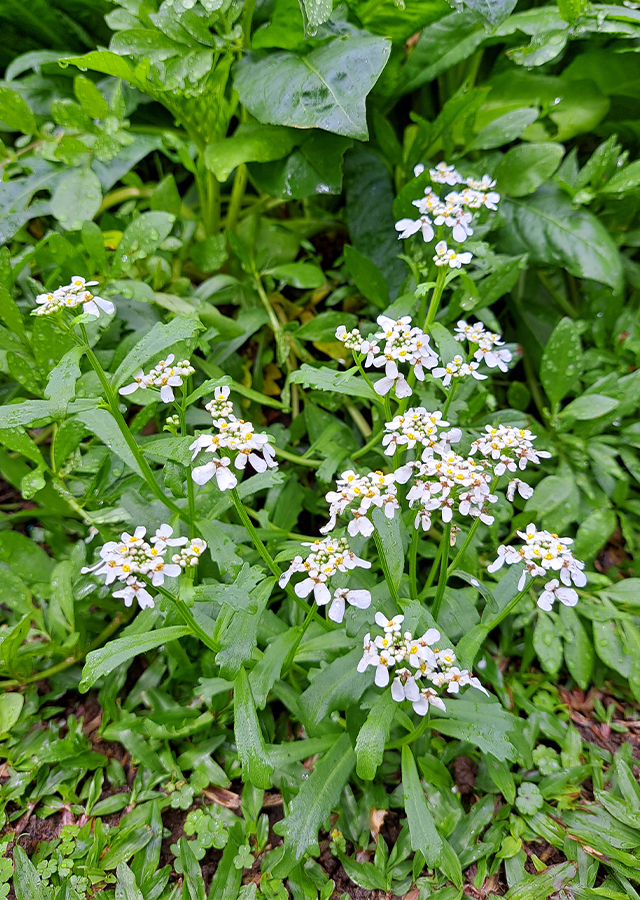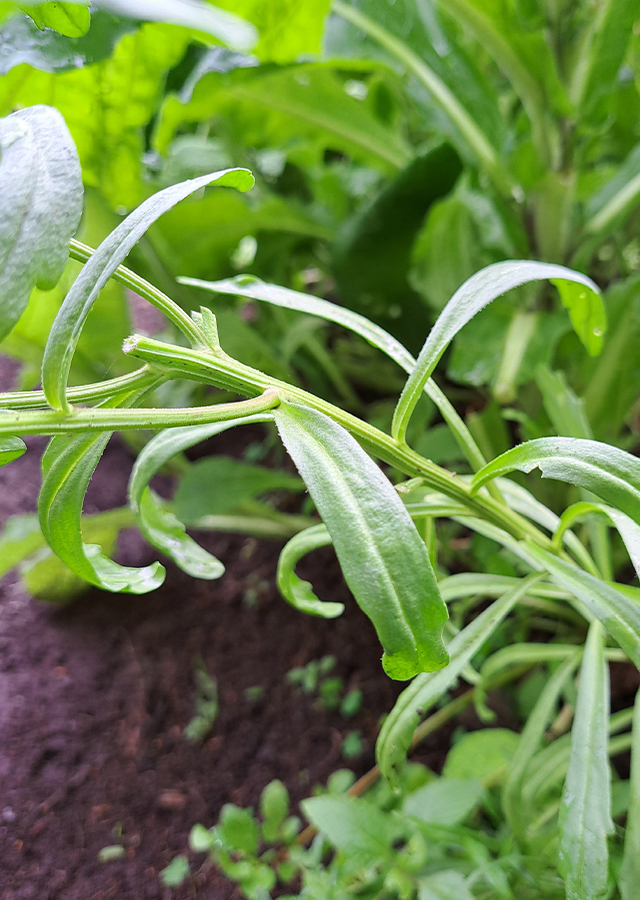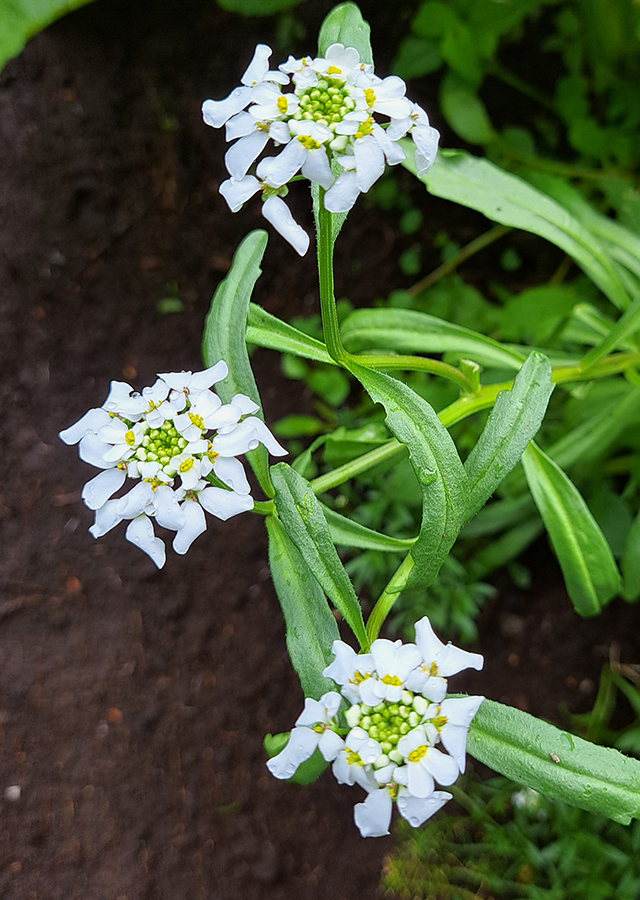Annual Candytuft
Iberis amara L.
Brassicaceae
Location in our garden
Principal



Synonym
Biauricula amara (L.) Bubani
Crucifera iberis E.H.L.Krause
Thlaspi amarum (L.) Crantz
Habitus
Herbaceous. An herbaceous, annual or occasional biennial plant that grows about 15-30 cm tall
Part Used
Leaves
Seeds
Roots
Stem
The Whole Plant
Growing Requirements
Full Sunshine
Habitat
Roadside
Overview
Iberis amara is native to the Old World, originating from Western Europe (Spain, England), Central and South, the Caucasus, and also Algeria. This weed plant has a unique flower shape, and is sometimes planted by the community as an ornamental plant. The leaves and flowers, can be consumed raw and have a taste similar to sweet broccoli. Based on its function as a medicinal plant, Iberis amara has traditionally been used and believed by the community to treat various ailments and has also been used as an ingredient in modern herbal medicine.
Vernacular Names
No information found on this. Need further research.
Agroecology
Habitat of Iberis amara is usually found growing on dry chalky soils on hillsides and in corn fields, but can also be found in yards, roadsides, mines, and vacant lots as a fertile weed. Easy to grow in good, well-drained soil in full sun (6 or more hours of direct sun a day). Produces fewer flowers in partial shade. This plant can tolerate slightly acidic soils and can also be successfully grown in nutritionally poor soil and on dry walls.
Morphology
- Stems - upright with splayed branches and downy-haired at the edges.
- Leaves - elongating cuneiform and obtuse. The lower leaves are often spatulate and narrow toward the petiole. The upper leaves are sessile, usually with 2 to 4 blunt teeth at wide intervals and a ciliate margin.
- Flowers - sweet-scented, fragrant, flowers are arranged in racemes; there are 4 orbicular, diagonally splayed sepals approximately 2 mm long with white or reddish membranous margins and 4 obovate-elongate white petals, the outer ones approximately 6 mm, the inner ones 3 mm long. The plant has 2 short and 4 long stamens and a superior 4-carpled ovary; the carpels are fused.
- Fruits - small pod, 4 to 5 mm long, almost circular with wide-winged fruit sides and a tough margin. Each of the 2 chambers has only 1 seed.
- Seeds - semi-ovoid, 2.5 to 3 mm long, flat and approximately 1 mm thick. They are usually narrow-winged at the margin, brown and smooth.
Cultivation
Propagated by seeds. The seeds germinate within 3 weeks.
Chemical Constituents
Glucosinolates, flavonols, and curcurbitacine.
Traditional Medicinal Uses
- Little used in modern herbalism, annual candytuft is a bitter-tasting tonic, aiding digestion and relieving wind and bloating.
- It is traditionally taken to treat gout, rheumatism and arthritis.
- All parts of the plant are antirheumatic and antiscorbutic.
- Seeds are considered very useful in the treatment of asthma, bronchitis and dropsy.
- Common homeopathic remedy is made from the seeds.
- It has always been used for gout, rheumatism and kindred ailments.
Part Used
Reference Sources
- Temperate Plants Database, Ken Fern. 2016. Iberis amara. https://temperate.theferns.info/viewtropical.php?id=Iberis+amara. 21-03-23.
- Health Benefits Times. 2021. Facts and Benefits of Annual Candytuft. https://www.healthbenefitstimes.com/annual-candytuft/. 21-03-23.
- North Carolina. Extension Gardener. Iberis amara. https://plants.ces.ncsu.edu/plants/iberis-amara/. 21-03-23.




